National Take Your Cat to the Vet Day offers a unique opportunity for veterinary practices to connect with cat owners and promote the importance of regular health checkups. While cats are beloved members of many households, they are often underrepresented in veterinary visits.
This day provides a chance for your practice to highlight the benefits of preventive care, address common concerns that cat owners may have, and ultimately encourage more consistent vet visits for feline patients.
By proactively engaging with your clients through targeted messaging and campaigns, you can build stronger relationships with cat owners while increasing clinic visits. Consider how your practice can use this observance to reach out to existing clients who may have delayed care for their cats or attract new clients by emphasizing your commitment to feline wellness.
With the right approach, National Take Your Cat to the Vet Day can serve as a powerful tool for both client education and practice growth. Whether through social media, email campaigns, or in-clinic promotions, your practice can maximize engagement by creating a welcoming atmosphere that resonates with cat owners and reinforces the value of routine veterinary care.
A great day to talk about preventative care for cats
Promoting preventive care for cats is a critical aspect of maintaining their long-term health, and veterinary practices have a key role to play in spreading this message. Many cat owners may view their pets as low-maintenance, but (as you know) regular vet visits are essential for identifying health issues early and providing necessary care. Educating cat owners on the benefits of preventive care helps protect their pets and strengthens the trust they place in your practice.
Since cats commonly hide signs of illness, preventive care is critically important. Conditions like dental disease, obesity, and kidney disease often develop without obvious symptoms. By encouraging regular checkups, your practice can help catch these issues before they become serious. Key preventive care elements to emphasize include:
- Routine wellness exams to monitor health and detect potential issues early
- Vaccinations to protect against common and preventable diseases
- Dental care to prevent tooth decay and gum disease, which are common in cats
- Parasite prevention, even for indoor cats, to guard against fleas, ticks, and worms
- Nutrition and weight management guidance to avoid obesity and related complications
It’s also important to address the misconception that indoor cats don’t need regular vet visits. Even if a cat stays inside all the time, they can still develop health problems that require attention. Regular checkups allow for the early detection of issues that may not be immediately visible to owners.
Addressing Common Barriers to Cat Vet Visits
One of the biggest challenges veterinary practices face is the reluctance of cat owners to bring their pets in for regular visits. Understanding the common barriers that prevent cat owners from scheduling appointments is crucial for addressing these concerns and improving feline healthcare.

Perceived stress for the cat
Many cat owners avoid vet visits because they believe it will be too stressful for their cat. Practices can mitigate this by offering advice on how to make the visit smoother, such as getting the cat used to its carrier at home, using calming sprays, and scheduling appointments at quieter times of the day.
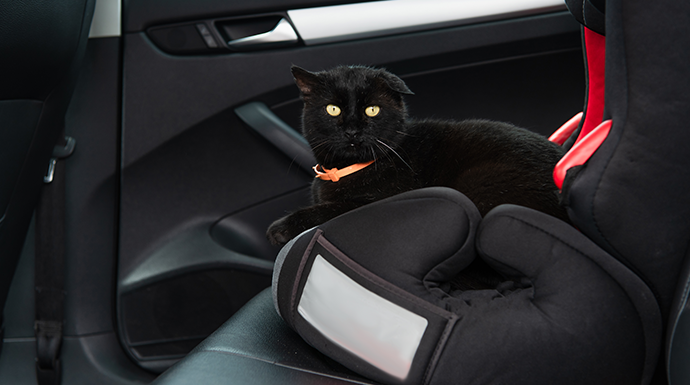
Difficulty with transportation
Transporting a cat to the vet can be a hassle, especially if the cat resists getting into the carrier or behaves poorly in the car. Your practice can provide tips on how to make car rides less stressful, such as covering the carrier with a blanket or using specialized carriers designed to minimize anxiety.
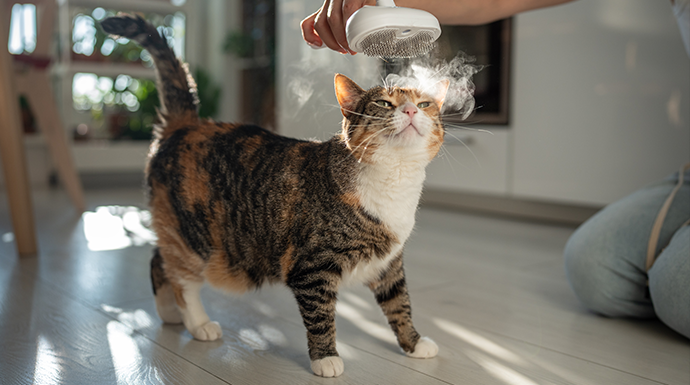
Misconception that cats don’t need routine care
Many cat owners, especially those with indoor cats, believe that regular vet visits are unnecessary. Educating clients about the importance of routine care and the potential health issues that can be prevented or detected early is key to overcoming this barrier.
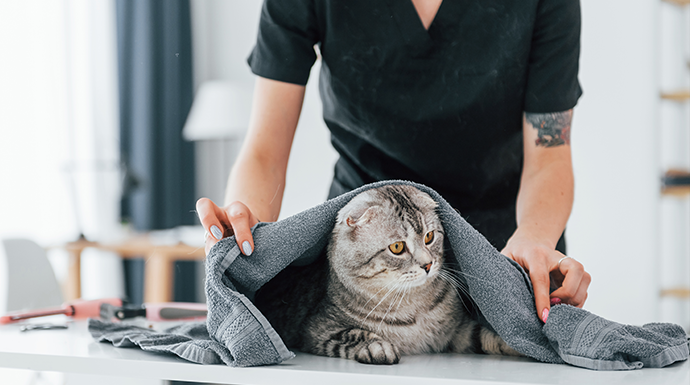
Cost concerns
Veterinary care can be perceived as expensive, leading some cat owners to delay or avoid visits. Offering payment options, wellness plans, or package deals can help make routine care more accessible and encourage cat owners to prioritize their pet's health.
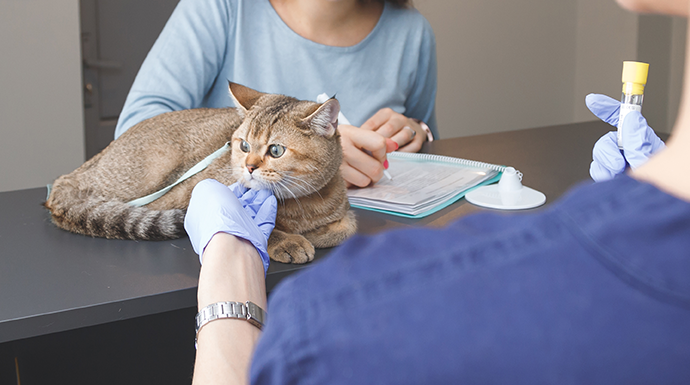
Time constraints
Busy schedules can make it difficult for cat owners to find the time to bring their pet to the vet. Practices can offer flexible appointment times, including early morning, evening, or weekend appointments, to accommodate clients with demanding schedules.
By proactively addressing these common barriers, your practice can make it easier for cat owners to prioritize their pets' health. Whether through client education, practical tips, or flexible services, your efforts to reduce the stress and inconvenience of vet visits can result in healthier cats and more satisfied clients.
How cat friendly is the space in your practice?
Creating a cat-friendly environment in your veterinary practice can go a long way toward reducing stress for feline patients and making visits more pleasant for both the cats and their owners. A welcoming, calming atmosphere can help encourage cat owners to bring their pets in for regular care.
Here are some ways you might not have thought about to make your practice more accommodating for cats:

1. Separate waiting areas
If possible, create separate waiting areas for cats and dogs. This can help minimize the anxiety that cats often experience around unfamiliar dogs, making the waiting room a less stressful place.
2. Quiet exam rooms
Designate specific exam rooms for cats that are quieter and free from the smells and sounds of other animals. Keeping these rooms calm and peaceful can help ease the nerves of feline patients.
3. Use of pheromone diffusers
Consider using feline pheromone diffusers, such as Feliway, in your waiting and exam rooms. These diffusers release synthetic pheromones that can help cats feel more relaxed and at ease.
4. Gentle handling techniques
Train your staff in feline-friendly handling techniques. Using gentle, slow movements and avoiding excessive restraint can help keep cats calm during exams and procedures.
5. Provide hiding spots
Cats feel safer when they have a place to hide. Consider providing towels or blankets for them to burrow under in their carriers, or use soft, padded surfaces in exam rooms where cats can feel secure.
6. Shorter waiting times
Reducing wait times for cats can prevent them from becoming overly anxious while they’re in the clinic. Scheduling feline appointments during quieter periods can help streamline the process and minimize stress.
7. Cat-friendly certification
Pursuing cat-friendly certification through programs like the American Association of Feline Practitioners (AAFP) can demonstrate your commitment to providing specialized care for cats and can attract more cat owners to your practice.
Communicating the value of regular vet visits to cat owners
Communicating the value of regular veterinary visits within empathy to cat owners is key to encouraging them to prioritize their pet's health. As a veterinary practice, your messaging can lean on the importance of preventive care and how routine visits can make a significant difference in their cat’s overall well-being and the length of their life. Here are some strategies to help convey this message:

Highlight the benefits of early detection
Regular vet visits allow for early detection of health issues that may not be obvious to cat owners. Educate clients on how early intervention can prevent more serious problems down the road, saving both time and money.
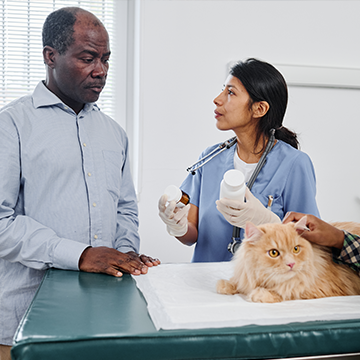
Use clear and compassionate communication
Frame your messaging in a way that is easy for clients to understand and highlights your concern for their cat’s well-being. Avoid overly technical language, and focus on the practical benefits of regular care.
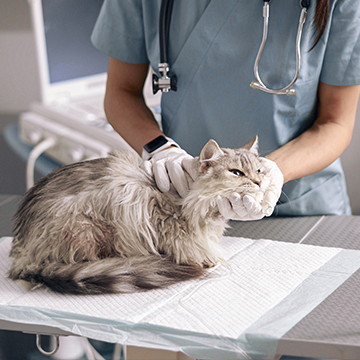
Share success stories
Real-life examples of how routine checkups have caught issues early and improved the lives of other cats can be powerful motivators. Sharing these stories through social media, newsletters, or in-clinic materials can help demonstrate the impact of regular vet visits.

Offer educational resources
Provide cat owners with accessible information about the common health risks that cats face and how routine vet visits can address them. This could include blog posts, brochures, or infographics that outline key preventive measures.

Leverage digital communication
Use email reminders, text messages, and social media posts to keep regular checkups top of mind for your clients. Digital communication tools can be effective in reminding cat owners when it’s time to schedule their pet’s next appointment.
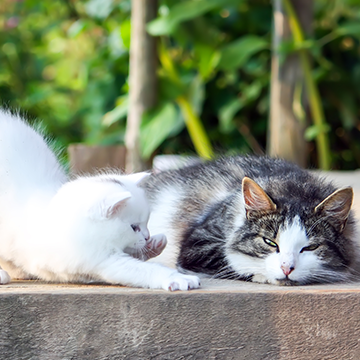
Personalize your messaging
Tailor your communications based on the specific needs of your clients’ cats. Whether it’s sending targeted reminders for senior cats or offering advice for new kitten owners, personalized messaging can make clients feel more connected to your practice and more motivated to follow your recommendations.
Strengthening the lifelong health of cats through your practice
Your veterinary practice plays a pivotal role in ensuring the lifelong health and well-being of cats, and the happiness of their families, by promoting consistent and comprehensive care.
By emphasizing the importance of regular checkups, preventive treatments, and client education, you can help cat owners extend their pets' lives and enhance their quality of life. National Take Your Cat to the Vet Day is just one example of how your practice can engage with clients, but the impact of your efforts can extend far beyond this annual observance.
Maintaining a proactive approach to feline health care not only improves outcomes for individual cats but also contributes to your practice’s reputation as a trusted partner in pet care. By offering preventive services and emphasizing the value of early detection, your practice can reduce the long-term costs of veterinary care for your clients while helping their cats live healthier, happier lives.
Consider implementing ongoing initiatives that support feline health year-round.
Offer wellness plans tailored to cats at different life stages, providing clients with a cost-effective way to prioritize their pets' preventive care.
Implement systems for routine follow-ups with clients after each visit to ensure that they remain engaged in their cat’s health care journey.
Continuously offer educational resources and workshops to inform cat owners about the importance of ongoing care, from kittenhood through the senior years.
Engage with the local community through events or partnerships that highlight your commitment to feline health and encourage cat owners to seek regular veterinary care.





